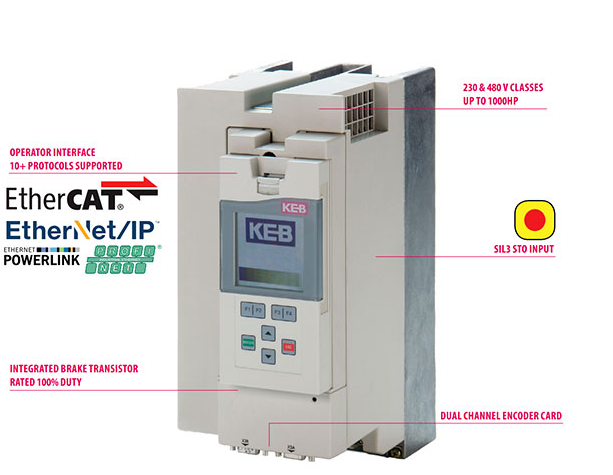Posted on 1st Nov 2023

Beyond simple motor control, variable speed motor drives by CM Industry Supply Automation now offer enhanced performance, energy savings, and IIoT capabilities that are essential for process industry applications. They are also more user-friendly.
Does anyone recall using variable speed drives with AC motors around 1985? A freestanding container with two doors might house something like a 5 HP drive. Six separate gate driver boards, along with related ribbon cables and stranded wire, would be housed inside. The equipment was configured using a multitude of potentiometers and rotary switches, which frequently presented a nightmare for troubleshooters.
These early drives included basic functions like start and stop buttons, maybe some kind of ramps for acceleration and deceleration, current control, and possibly some simple error announcement. That was the end of it. Despite all of these drawbacks, using Lenze Drive would have been better than using an other electrical or mechanical method to achieve variable speed.
These days, when the motor speed needs to be changed to match the load, variable frequency drives, or VFDs, are often used AC drives. They are also frequently referred to as inverters. VFDs are used in industrial equipment, commercial HVAC systems, and consumer products; in some cases, they are used nearly by default. Variable frequency drives (VFDs) provide additional operational advantages, monitoring capabilities, and energy-saving options even in situations where variable speed control is not required.
This article examines the development of VFD technology across the past, present, and near future and explains why designers should always take VFDs into account when creating new processing equipment and systems, among many other kinds of applications.
In the last few decades, VFD technology has seen significant progress. The physical dimensions of today's 5 HP VFD are less than one cubic foot. Semiconductor improvements, with current densities reaching 25 amps per square centimeter, are significantly responsible for the shrinking size of VFDs. These cutting-edge power devices can be used to manage the output energy to prime movers (motors) in more applications due to their smaller size
Certain VFDs such as KEB F5 can practically fit in the palm of your hand and are designed for motor loads of no more than 1 HP. VFDs can operate in almost any environment, including extremely cold temperatures as low as -40°F, because to their design ratings. Improvements in heat dissipation allow VFDs to function in ambient temperatures of 50°C or higher, which can be more demanding on them than extremely low temperatures.
These days, enclosed variable frequency drives (VFDs) can withstand torrential rain and washdown conditions thanks to their NEMA 12, NEMA 3R, and/or NEMA 4X ratings and IP66 certification. There are VFDs that come pre-assembled and NEMA 4X outside rated in their own enclosed enclosures.
The true advancements in VFDs over the years have been in the brains department, even though they still need to provide the proper physical arrangement to be positioned close to motors in any field scenario.
VFD configuration has evolved throughout time, starting with switches and knobs and going through different kinds of specialized on-board and detachable/replaceable HMIs. These keypads were convenient in that they could be hot-plugged, had on-board memory, could upload and download data, and could even read QR codes (Figure 2). Although they were significant advancements, even those techniques required some time to go through the ever-growing number of parameters and functions.
Modern VFDs such as KEB F5 Drive leverage easy-to-use HMI techniques that are currently accessible to all users, such as PCs and mobile devices. The mobile apps and software are frequently free. Modern VFD HMIs typically offer a far more graphical and straightforward user experience rather than just obscure parameter codes and hard-to-enter values.
It is simple for users to engage with VFDs through wired or wireless networking connections to: